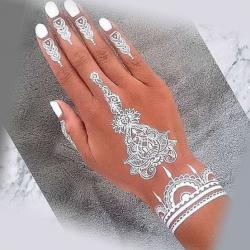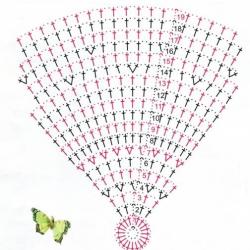Fun activities for children 4 years old. Development of thinking in four- to five-year-old children. Teaching reading and foreign languages
When a child turns 4-5 years old, many parents begin to seriously think about preschool preparation for their child. After all, first grade is just around the corner, and by this time the baby should learn to read, be good with a pencil and pen, and master the basics of mathematics. Of course, it is better to start preparing in advance; this will allow the child to gain the necessary knowledge and not lose interest in learning in the future.
By the way, regarding interest: when conducting educational activities for children 4-5 years old, we must not forget that at this age toddlers continue to explore the world through the same faithful companion of childhood - games. Also, the learning process should involve changing the type of activity and identifying talent.
We will talk in more detail about how to competently organize developmental activities for children 4-5 years old at home, how to set priorities, unlock potential and awaken interest in learning in this article.
Developmental activities for preschoolers 4-5 years old
Yes, your baby has grown noticeably and matured, he is trying to show independence in everything and thereby earn the praise of his parents. But do not forget that he is still a child and needs a proper daily routine and proper daytime rest. Therefore, any developmental activities, especially those with an emphasis on developing logic, training attention and memory, are best done in the morning. Also in the first half of the day it is better to study letters, reading and exact sciences, that is, mathematics. All classes should be conducted in a playful, friendly and relaxed atmosphere. Therefore, adults need to prepare special didactic materials in advance, draw up an action plan and be patient.
A speech development activity can be done while walking. For example, while taking a leisurely stroll to the store, you can learn some simple rhymes, or together come up with words starting with a given letter.
Creativity should be given due attention in the learning process. Modeling, drawing, putting together compositions from small objects develop fine motor skills, imagination and imagination of the child. In addition, such activities help to reveal talent and stabilize the child’s emotional state.
Parents should continue to prioritize the child’s physical development: under no circumstances should walks in the fresh air and active games be ignored. Many children at this age develop their own hobbies. It will be great if the baby starts attending sports. So girls may be interested in dancing and gymnastics, and boys will like swimming and tennis. Starting from the age of 5, young defenders can begin to learn the basics of martial arts techniques.
Examples of educational activities and games for children 4-5 years old at home?
These days, parents' options are virtually unlimited. In specialized stores or on the Internet you can find didactic materials and various games with which you can easily and naturally conduct children's educational activities for children aged 4 years and older.
By the age of 4-5, children enter a new period. Now they are no longer babies, but junior preschoolers. The development of thinking, attention and memory allows for more serious learning than before.
At this age, the child’s intellectual abilities increase significantly, and he prepares to master numbers and letters. Speech development proceeds at an active pace, perseverance and the ability to engage in a certain activity for a long time are formed. Soon your child will become a schoolchild.
What should a 4-5 year old child be able to do?
- Know basic geometric shapes and colors.
- Distinguish the position of an object in space - left, right, above, below.
- Be able to distinguish between the concepts of “more”, “less” and “equally”.
- See the differences between two objects or pictures.
- Assemble the pyramid yourself.
- Choose opposite words (hot-cold, high-low).
- Combine objects into groups, highlighting the main feature, know the names of generalizing groups (dishes, domestic or wild animals, tools, etc.)
- Know the names of the seasons, be able to say your first and last name, age, parents' names.
- Use up to 1000 words in the active dictionary, build sentences of more than 3-4 words.
- Retell the bright events of the day, favorite fairy tales and poems.
How to deal with children at this age?
- Despite the fact that the child has already “grown up” significantly both intellectually and emotionally, play remains the main leading activity for him. So the entertaining form of classes should be maintained until entering school.
- At the same time, children enjoy learning using various manuals and didactic materials.
- A child can already do the same thing for about 20 minutes, but you shouldn’t “force things,” even if your child is very diligent. Activities should vary to avoid fatigue and maintain focus and interest.
- And don’t forget to praise and support your child! Even minor successes should be celebrated. It’s important to compare your achievements not with your neighbor’s son Kolya, who “already reads, writes and counts,” but with what your child could do before. Now he has learned something new, he is great!
Examples of activities with children 4-5 years old
Still remember to stimulate fine motor skills:
- If your child loves to color pictures, great! In addition, you can learn to shade them with lines tilted in one direction or the other. You can also trace the contours drawn with a dotted line.
- Have you already taught your son or daughter how to tie shoelaces? It's time! And unbutton and fasten buttons.
- Girls love to make jewelry from beads. Bright bracelets or beads can be given to girlfriends or dressed up yourself. But the boys shouldn’t be left out either - let them make a decoration for their mother.
- Teach your child to tie and untie knots. Only a real sea wolf can untie a sea knot!
Speech development is very important:
- Ask your child to arrange the cards in the correct order and make up a story based on them. Help with leading questions - Who is in the picture? What happened to the heroes? What happened in the beginning and what came later?
- Tongue twisters are good for clear pronunciation of sounds.
- It’s very fun to tell them with the whole family - who is faster and clearer?
- Read more and ask to retell the text.
- Memorize children's poems.
- Teach your child to change words using suffixes. For example, using the game “Make it big or small”: hare - bunny, house - house, hare - bunny, house - house.
Logic puzzles are becoming more and more complex. Invite your child to assemble a geometric figure or any other pattern from sticks or matches. Show the figure for a few seconds and then stir. You only need to collect from memory.
Game "What has changed?" It also develops memory well. Place several toys or figures on the table or draw on paper. After a few seconds, ask your child to turn away or close his eyes and remove one of the objects or rearrange them. You need to guess what happened. Gradually increase the number of items.
Don't forget about creative activities. Offer your child various options for appliques, non-standard drawing (with fingers, threads, blowing paint from a tube, creating drawings from blots and much more, which will allow him to develop creative thinking).
Separately, I would like to note the preparation for school. Many parents mean by developmental activities exclusively the study of letters, numbers, and learning to read. At the age of 4-5, it is quite possible to gradually teach children the alphabet and counting, but you should not overload them with information. Everything has its time and its own approach. It’s too early to learn “like at school.” But you can just play! Letters and numbers can be sculpted, painted, addition and subtraction can be mastered by treating your favorite toys to sweets and pies.
Don't forget - it is during play that a child learns about the world. But this game must be led by a wise adult.
At the age of 4-5 years, a child develops a creative attitude towards the world. He begins to create various crafts with his own hands. It is very important that adults at this moment tell the child that he can do a lot on his own and praise him for his imagination. This will arouse in the little person a desire to learn more about the world around him. Educators and parents are obliged to take into account all the developmental features of a 4-5 year old child. During this period, new knowledge should be given, but in a form that will be exciting for the child.
Features of development of a child 4-5 years old
Now the baby is able to think, although his experience is small, so there may be errors in his explanations. You cannot laugh at a child’s mistakes, so as not to destroy his interest in understanding the world. An adult should become a source of knowledge for the baby, which will carefully guide the little one to make an independent decision and justify the phenomenon that is happening.
Features of the development of a 4-5 year old child are manifested in an increase in the participation of perception, will, memory and attention.
Active cognition of many properties of objects occurs. The child puts them on top of each other and compares them, and with interest becomes aware of such new categories for him as color, shape, size, time, space, taste, smell, sound.
The baby becomes more attentive, due to which voluntary memorization is formed. He easily manages to learn short poems and counting rhymes. At this age, the baby develops imagination and speech, and improves diction. This needs to be given as much attention as possible and to support the child’s desire for independence and to cultivate a sense of beauty. It is easy for an adult to achieve the desired result, since all the realities of life can be explained to a child during the game in a fun and unobtrusive way. Children live in the world of their fantasies and fairy tales and have a rich imagination. All the above-described features of the development of a 4-5 year old child must be used wisely in order to avoid problems.
Basics of training
What is the best way to start the development of children 4-5 years old? What kind of activities are suitable for a child? These questions concern all parents who decide to educate their son or daughter themselves. Taking into account all the subtleties of the development of a child of middle preschool age, one should promote, and not interfere with, the manifestation of his new positive qualities, which are to be formed and consolidated in the child’s character.

So, the child wants to be independent, so you need to provide him with this opportunity. He dreams of drawing, creating masterpieces from plasticine and clay - you shouldn’t interfere with him. He wants to communicate with his peers. Let him be friends, quarrel and learn to make peace, apologize and forgive. This is the accumulation of life experience, knowledge of the world around us.
Mathematics
Adults need to teach children more complex things. Mathematics for children 4-5 years old can become a fascinating knowledge of the world of things and help open new horizons. Adults will build their activities based on the basic skills that the child has already acquired earlier. He easily recognizes where right and left, bottom and top are, knows a circle, square, triangle, knows how to write and correctly arrange numbers in ascending and descending order, and compare the number of objects. Knowing what skills your child has, it is easy to outline a number of tasks that will help consolidate previously acquired information and add new ones.
Math games
Children love coloring books very much. You can invite your child not just to study the numbers, but ask him, without lifting his pencil from the paper, to connect all the dots using the written numbers into one drawing. This game makes the child very happy when he sees that using numbers he managed to draw a parrot, crocodile or fox.

If you need to reinforce order when counting, you can invite your child to complete an equally exciting task. The coloring picture shows apples. They need to be circled, colored and counted. All tasks should be offered with gradual complication.
Thus, mathematics for children 4-5 years old can become a favorite and exciting pastime. Subsequently, this interest will play a positive role when studying subjects at school.
Language and speech games
The same games can be used for the development of children 4-5 years old, forming correct speech and developing logical thinking. For example, the game “Guess whose shadow?” will help the child better navigate the world around him. The sheets contain outlines of various objects and animals. The child is asked to say who each shadow belongs to.

To develop speech, it is good to teach your child to pronounce tongue twisters and tongue twisters. It will be more pleasant for the child to do this with some fairy-tale character from the puppet theater. And if you then ask a tongue twister to say it just as quickly in the voice of a bear or a hare from a fairy tale, you will get a mutually exciting activity. Such exercises and games are extremely important for correct speech. For a child to be understood not only by his parents, but also by everyone around him, he must have a thousand words in his vocabulary.
Language learning
According to many experts, children aged 4-5 years can easily master any foreign language. If there is such an opportunity, you should definitely organize similar classes in the form of working with cards. They should depict letters, pictures and words. You can offer a variety of tasks using these cards. The child will remember the words, pronunciation and images of letters.
Gymnastics
Being carried away by all kinds of varied activities, we should not forget that 4-5 years is still important and useful. And no one has canceled it yet. Exercises can be done with gymnastic and general physical exercises. This can be a warm-up during each session. There are many options for finger gymnastics. Here's one of them.

A short poem is read:
“Fingers do exercises,
To be less tired.
And then they are in albums
They will draw together.”
While reading, you can stretch your fingers, shake your hands, and join them into a “lock.” Such small pauses will help the baby relax.
Conclusion
When parents begin to pay more attention to their child and know all the developmental features of a 4-5 year old child, they will achieve maximum positive results in his upbringing and development. Therefore, the most important thing here is attention.

5 years: height and body weight increase, weight reaches almost 20 kilograms. During this period, it is important to monitor the feasibility of the loads that are given to children during work assignments. This is explained by the fact that the spine of a five- to six-year-old child and skeletal muscles are still developing. During this age period, the development of the child’s intellectual abilities, his morality and will, and the emotional spheres of his personality are observed. Therefore, it is especially important to support him in all good endeavors, and also to correctly restrain him from negative manifestations of lies and boasting.
At the age of 5-6 years, it is especially important to establish the correct moral attitude towards oneself and others, to consolidate kindness, honesty and decency. As the saying goes: “What goes around comes around!” Raise your children correctly - this is the key to your happy old age!
Svetlana Cherednichenko
Summary of correctional and developmental classes for children 4–5 years old
Target: Correction of fine motor skills, formation of ideas about color, shape, size. Tasks: Learn to distinguish between the right and left hand, vertical, horizontal arrangement of objects. Development of logical thinking.
Duration classes: 25 minutes
Group capacity: no more than 10-12 people
Materials: set of geometric shapes, toy car, labyrinth drawing
Age: 4-5 years
Move Lessons I.Organizational moment Opening speech by teacher psychologist:
Everyone, everyone, good afternoon!
Get out of the way, our laziness!
Don't bother me working
Don't interfere with your studies!
Educational psychologist - What is it like now? class?
Pupils: - Corrective lesson. II. Topic message classes Educational psychologist: - Children, today is class we'll go to fairyland "Geometric Shapes" where various geometric figures, shapes and colors live. We will not go there alone, but a faithful assistant will help us. And who will be! Now you will find out for yourself by guessing mine riddle:
“I am cheerful, mischievous, simple and colorful!”
Pencil
Educational psychologist - Who are these children?
Pupils: - Pencil!
II. Physical moment
Target: activate the activity of the brain, cardiovascular and respiratory systems.
How are you? - Like this!
How are you going? - Like this!
Are you running? - Like this!
Do you sleep at night? - Like this!
How do you give? - Like this!
Do you take it? - Like this!
How are you being naughty? - Like this!
Are you threatening? - Like this!
III. Finger and palm massage exercise
Target: activate brain activity, stimulate the development of speech skills, activate memory, attention, develop creative imagination.
Educational psychologist: - And so that they are mobile, write and draw well, we will now stretch our fingers. Massage.
So that our finger is healthy,
Let's give him a massage.
Let's rub it harder
And let's move on to the next one.
Rubbing the back of the fingers
We're on the other side
You have to rub your finger,
To make him happy
He was healthy and not sick.
Rubbing fingers from the inside
To keep your palm strong -
Let's massage it a little:
Press ten times
And let's change palms.
Massage the back of the hand
Here are the funny chickens
They came to the vegetable garden.
They walk joyfully
They peck the grains quickly.
Palm massage from the inside (picture)
Now friends are chickens
They climbed into another bed.
There are kids pecking at grain
Also bold and agile.
Tapping the palm with the fingertips on both sides
VI. Didactic game house.
Target: Formation of ideas about shape, size. Vertical, horizontal arrangement of objects.
Materials: set of geometric shapes.
We'll build a house now
Ten-story,
It won't be made of bricks
But not paper either.
It's high, there's a garage below.
What is our house made of?
Children, let's build a house together! Take geometric shapes - these are our building materials and let's start construction. Where the triangle and cone are is the roof.
V. Labyrinth with a secret
Target: correction of fine motor skills, develop clear coordinated actions in conjunction with speech; training speed skills in performing mental operations.
Materials: toy car, maze drawing
The labyrinth has an entrance and an exit, between which you must first find the shortest path by drawing it with a simple pencil. After going through the labyrinth, you will get a colorful picture. By painting the entire route with different colors, you will get a colorful picture. Squares that do not fall on the line do not need to be painted.
VI. Bottom line classes
Educational psychologist: - What geometric figures did we meet at class?
Pupils: – Square, circle, triangle, rectangle, cylinder.
Educational psychologist: - Who was on today occupation as our assistant?
Pupils: - Pencil!
Educational psychologist: - Why do we do finger exercises?
Pupils: - To make your fingers write, draw, etc. better.
Educational psychologist: - Well done! You all did well today.
When compiling classes used literature:
1. Bityanova M. R. "Child's adaptation at school" correctively-developmental training M., “Ped. Search", 2008
2. LavrentievaG. P. "Practical psychology for educators" collection of tests, Kyiv, 2002.
3. Vasilyeva N. N. and Novotortseva N. V. "Educational games for schoolchildren", Yaroslavl, 2006
4. Vasilieva S.V. “Diagnostics of mental states children preschool age", S. -P. "Speech", 2005
5. Volkov B. S. “Tasks and exercises in child psychology”, M. "Education",
6. Collection of psychological games and exercises "The Edge of Success", /comp.: V. N. Nokhrina, N. A. Uvarova, N. A. Shtyrts; - - Ect. GOU DOD CDOD "Youth Palace" 2006.
Publications on the topic:
Summary of an individual correctional and developmental lesson on the development of mental processes for children 5–6 years old Goal: development and correction of mental processes in children of senior preschool age Objectives: Educational: - continue to develop the skill.
Goal: formation of correct, clear speech Tasks: activate the processes of perception, attention, memory; increase.
 Objectives of the lesson: 1. Development of fine motor skills. 2. Speech development: learning to understand addressed speech, speech motivation. 3. Learn to show parts.
Objectives of the lesson: 1. Development of fine motor skills. 2. Speech development: learning to understand addressed speech, speech motivation. 3. Learn to show parts.
Objectives: 1. To consolidate existing knowledge about the seasons, in particular autumn. 2. Clarify and consolidate knowledge about vegetables. 3. Development and correction.
Parents often think about how to prepare their son or daughter for school. What skills should children have who will sit at a desk for the first time in a year?
What are they?
Every year of life for children is a certain stage. It's the adults who don't change as quickly as they do. After all, childhood is the time of the most intense human development. In no other years does he acquire as much as as a preschooler.
During its first 5-6 years, a child turns from an absolutely helpless newborn into a fully developed person. He has his own interests and character traits, individual views on life. This speed of success and the manifestation of ever new abilities is simply amazing.
The child turned 5 years old. It is growing rapidly - right before our eyes. Such a boy or girl needs energy. Therefore, the quality of food is important.
The child's behavior also changes. He develops an evaluative attitude towards himself and other people. He is quite often interested in what is good and bad, and really wants to live by the rules. He condemns those who violate this. For him, his parents are an ideal, an object to be emulated in every detail. So try to make your example positive.
"I got it"
As for the psychological component, at 5 years old a child already understands a lot. He listens to your explanations and responds adequately to all requests from adults. He can occupy himself if his parents are not yet able to be with him.
Psychologists say: 90% of personality is formed between 5 and 7 years. And during these two generally short years, mothers and fathers can “put” into their child the very qualities that they consider necessary, and cultivate exactly those habits that, in their opinion, cannot be done without.
All this is not difficult. Children these years easily copy those whom they love, respect, and appreciate. Their behavior is the best, the most correct, the only possible. So control your actions and words. After all, if you say one thing and act completely differently, then don’t expect anything good from your child!

Write and read
Communicating with five-year-old boys and girls is a pleasure. At 5 years old, a child is interested in everything. He is unusually open to all new information, knowledge, as well as to various skills. He wants to do everything at once, try everything: dance, draw, and play tennis. It’s interesting that he actually has an easy time with both mental and physical skills.
It also surprises no one that even before first grade, many children already know letters, can write them, and some also read quite fluently. Children usually also master the simplest arithmetic operations; they can add and subtract. In a word, now is the most favorable time to “cram” more valuable and useful things into your child. Very little time will pass - and this wonderful, passionate interest in the world around us, which pleases mom and dad, will slowly fade away. So don't miss such a good time.
At the desk
Research by psychologists provides such interesting data. Of all the six-year-olds who go to school, only 30% have learned to hear what the teacher says, remember, do what he tells them to do, and then analyze their actions.
But 70% do not know how to do this, 25% require that the task be repeated to them twice or even three times. 30% of children hear, understand, remember, but do not know how to act independently. This boy sits and moves his pen across the table. It doesn't work, so to speak. The teacher should come up to him and say: “Come on, write the numbers.” Otherwise, he will not do anything until the end of the lesson and, therefore, will not learn.
This is where all the difficulties of a first-grader stem. And the reluctance to go to classes after a week. However, when a child has lived correctly for five years, all these skills have been formed.

Let them play more
A child is not an adult. He masters the world through play. All the rules of life, its laws and norms - only in a playful form, and not through lectures or notations. Therefore, it is necessary to teach him the same alphabet, reading, and arithmetic only in this way.
At this time, children begin to ask rather difficult questions, which makes some adults nervous. And in vain. You can’t brush off your son or daughter! For example, how do you answer this: “Why are the leaves green, but the sky is not, it’s blue?” Moms and dads, no matter how busy they are in the evenings, must answer all this truthfully and clearly. And here, educational games for children 4 - 5 years old are very good helpers, simply irreplaceable. They have no competitors yet.
Tests and puzzles
True, the kids will have to think very carefully. After all, the tasks are not so simple. But it will be an excellent training - for the development of memory, also imagination with attention, counting, and other properties necessary for a preschooler.
For example, there are many crossword puzzles designed for this age. You can also make sentences from different words mixed together. How fascinated children are by tests! The ones where you need to choose only the correct answers.
Children love to look for all sorts of differences in pictures. This is where attentiveness, perseverance, and perseverance develop.
There are many other types of pastime from the “educational games for children 4-5 years old” series. The same assembling puzzles is not just an activity to keep the child quiet at home and not bother anyone. No, this is a great way to develop his creative abilities.

All familiar letters
There will be nothing wrong if adults tell the child what letters are. This will be interesting for 5 year old children. But how to learn them with a child?
Usually girls and boys themselves begin to ask: “What are these badges?” - when someone at home reads a book to them. There is also a special alphabet for children 5 years old. This colorfully published alphabet is a wonderful book. She is still unfamiliar to the kids. So it's time to buy it right now and start practicing.
The main thing is not to demand that the baby firmly understand everything. It is more important to maintain interest in learning. It is enough to conduct such classes for children 4 - 5 years old for 10 - 15 minutes a day. It's good to learn letters with short words. But the form of the game is strictly required!

Guessing game
Folklore is more useful now than ever - riddles for children 5 years old. They are very figurative, concise, and easy to remember. This is a kind of mental gymnastics. And how wonderfully creative thinking, the same ingenuity and ingenuity develops at the same time. And what is important for our time is the gift of solving simple problems in a very non-standard way. If you want to develop your child mentally, do not neglect guessing games. Moreover, kids love them very much. And composed in poetic form, they are much more interesting.
But in poetry they force children to pay attention to little things that previously remained unnoticeable, and broaden their horizons.
And what joy and pride comes over the child when he finds the correct answer! Moreover, children can play this way without adults, on their own, which gives them the ability to communicate with each other, live in a team and take into account others. All this will be useful not only at school, but in life in general. Contact people, as noted, are easier to advance in their careers, and their leisure time is more meaningful.
Another tip. Solve riddles with your children. Or try to come up with them yourself. Even on your everyday, vital material. It is very funny! Not to mention the benefits for the whole family, for the good atmosphere in it.

New idea

Praise your children more for success in any activity. Don't scold for mistakes. Is everything going smoothly at work for you? And don’t get tired of maintaining a keen interest in learning in your child, and not only in the area of reading.






